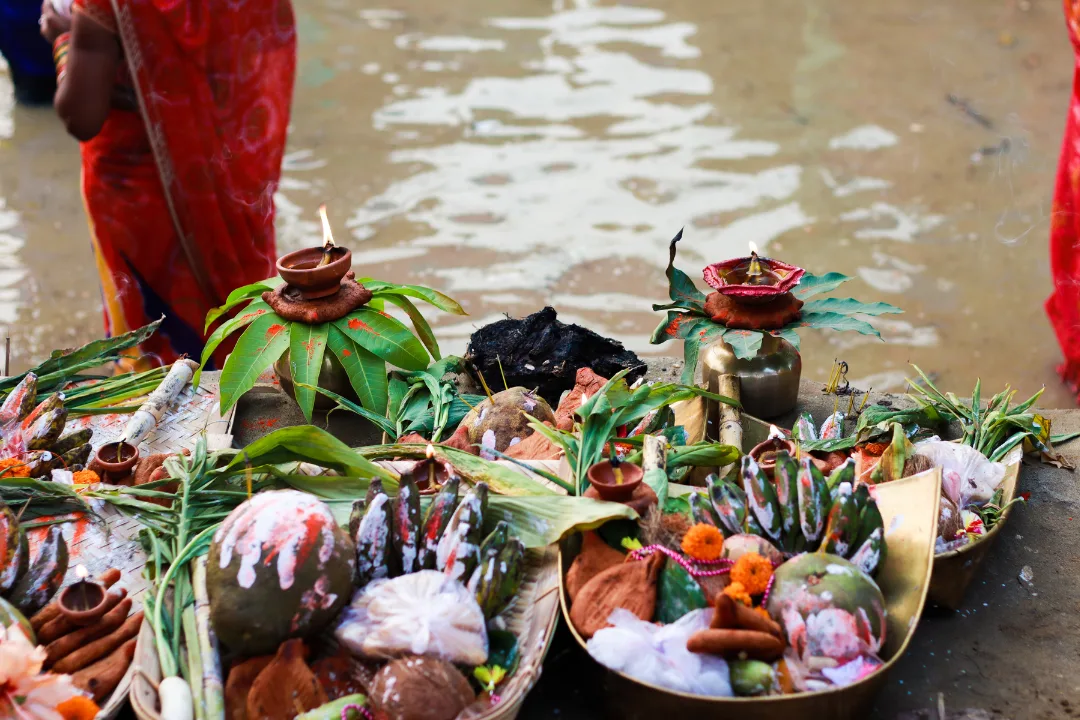Introduction
Thekua is a traditional sweet snack popular in the Indian states of Bihar, Uttar Pradesh, Jharkhand, and parts of Nepal. It is a type of biscuit or cookie, made from wheat flour, jaggery, ghee, and sometimes coconut. Thekua is commonly prepared during festivals like Chhath Puja, a major festival celebrated in Bihar and surrounding regions, although it can also be enjoyed year-round . Traditionally, thekua is deep-fried in oil or ghee till crisp and golden brown. The texture should be slightly soft on the inside and crispy on the outside.
What sets Thekua apart from other fried sweets is the method of preparation:
It is usually shaped into round or rectangular shapes and then deep-fried until golden and crispy. This gives it a long shelf life, which is important for a festival treat that must endure the multi-day festivities.
Thekua’s simple but tasty ingredients, like cardamom or coconut, and jaggery, a natural sweetener, show honor to native, natural ingredients that were traditionally grown in the lush Bihar land. Thekua is more than simply a dessert; it is a representation of love, faith, and celebration because of its fundamental roots to community, history, and spirituality .
So let’s start making this simple and easy Thekua recipe that you must try:
Ingredients you need for Thekua
- 2 cups whole wheat flour (atta)
- 1 cup jaggery (grated or powdered)
- 1/2 cup coconut (freshly grated, optional)
- 1/2 tsp cardamom powder
- 1/4 cup water (adjust as needed)
- Oil or ghee for frying.
Preparation:
1. Prepare the jaggery syrup:
- Heat the jaggery and a little water in a small pan until the jaggery melts . If required, strain to eliminate contaminants .
- Give it a little time to cool.
2. Make the dough:
- Add the whole wheat flour, cardamom powder and grated coconut (if using) to a large mixing bowl. For added taste, you can also add dried fruits or nuts .
- Slowly add the heated jaggery syrup to the flour mixture and knead the mixer to form a stiff dough. If the dough is too dry, increase the amount of water. The dough should not be too soft .
3. Shape the Thekua :
- Take small portions of the dough, shape the dough into round balls, then gently press into discs. Then flatten them slightly or press them into molds for decorative patterns.
- For the shape, a cookie cutter can also be used .
4. Fry the Thekua:
- In a deep pan over medium heat, heat the oil or ghee. Drop the shaped dough carefully into the heated oil.
- Turn them repeatedly to ensure equal frying and fry them until golden brown. Take off and pat dry with paper towels.
5. Cool and Store:
- After letting the Thekua cool fully, store them in an airtight container.
Enjoy your handmade Thekua during festivities or as a snack.
Thekua has a slightly crunchy texture with a sweet, earthy flavor from the jaggery . The ghee imparts richness, and the addition of coconut adds a nice chewiness to the bite. The sweetness level can vary depending on how much jaggery is used, but it’s generally not overly sugary—more rustic and wholesome.
Cultural Significance:
- Chhath Puja:
Thekua is especially important during the festival of Chhath Puja, which honors the Sun God and during which devotees bring sacrifices and pray. Offerings made to the Sun and the river frequently contain thekua. It is said to have spiritual as well as symbolic meaning . - Gift and Sharing:
A lot of thekua is usually made and shared with loved ones. It is also a common snack at feasts and festivities. It can last for several days or even weeks, which is why it’s a great treat for festivals .
Overall , Thekua is a tasty, filling snack that has both cultural and culinary significance in the areas where it is consumed . It is a popular comfort dish, particularly during festival seasons, because of its basic ingredients and cooking process.
So, this is all for now, we’d love to hear from you. Feel free to share your experiences or questions in the comments below! and don’t forget to share them with friends and others who might benefit! Save Consumerviews in your bookmark for easy access, and follow our Facebook Page Consumerviews India for more articles like this.
Also read
Turkish Royal Dishes: Top 5 Cuisine – A Remarkable Culinary Experience










0 Comments